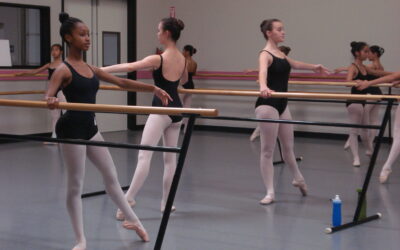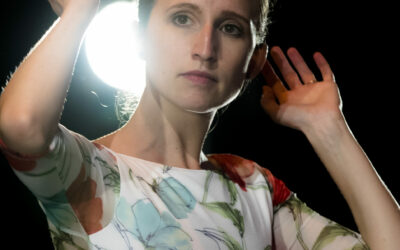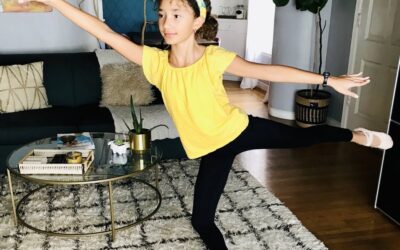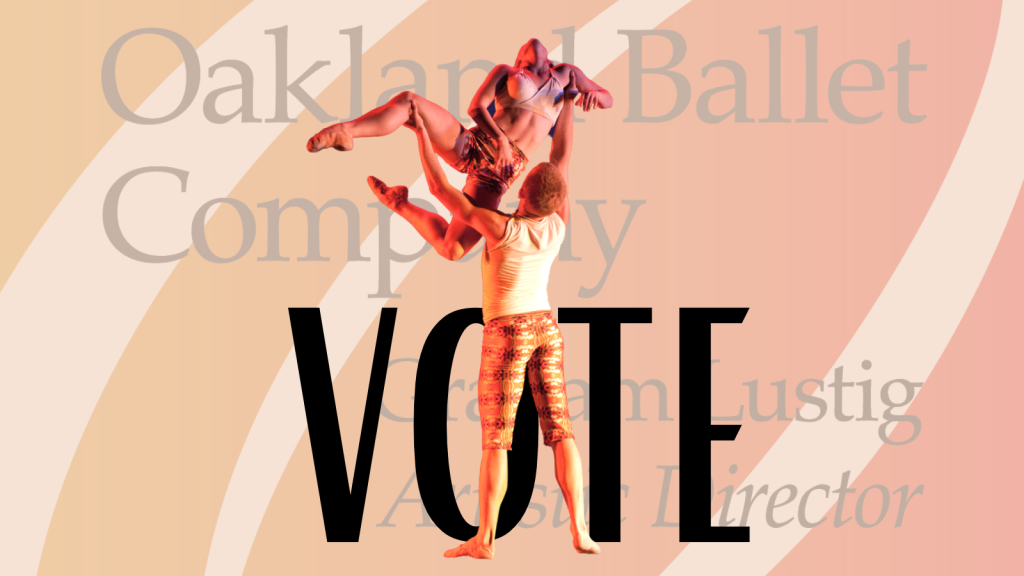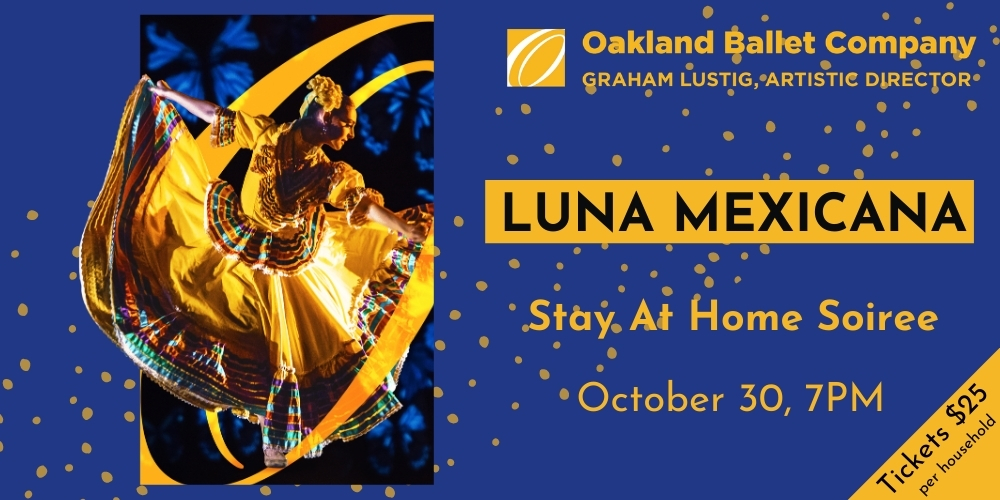A few dozen young dancers ages 7-17 gathered for three weeks in July for OBC’s annual Ballet Boot Camp summer intensive program at Hayward’s Ballet Petit studios. At the end of each week the students presented an “informance” – an informal showcase of what they had learned over the previous week during hours of dance technique and choreography classes.
As an audience member for two of the three “informances” I discovered that the students learned quite a lot in one week’s time. The lengthy and detailed choreography the students learned and created over essentially four and a half days was truly impressive!
Graham Lustig, Oakland Ballet’s Artistic Director, opened the showcase by recounting his days as a young dance student in his childhood home of West London. He described how his training included not just the rigorous drills in technique but also the creative challenge to “make a dance”. The challenge was not just one of devising choreography but also designing sets and titles. In other words, it was coming up with the whole package. Graham now passes this challenge on to the next generation of aspiring professional dancers and choreographers as an important part of the summer intensive program.
Stepping up to the “make a dance” challenge students performed dances they had both created and learned from that week’s featured repertoire – Raymonda – composed by Alexander Glazunov and choreographed by Marius Petipa for the Russian Imperial Ballet in 1898. Raymonda is the story of a Crusader knight seeking shelter, a young countess named Raymonda, and a mystical White Lady who warns the girl of impending danger. The danger soon appears in the form of Abderakhman who tries by charm, stealth and force to make Raymonda his own only to be thwarted by the Crusader knight (a disguised King Andre II of Hungary) and her beloved Jean de Brienne. It’s pretty standard nineteenth century ballet fare and was probably created to keep the legions dancers in the Imperial Ballet busy as it required a cast of hundreds. Today, Raymonda’s greatest hits are usually combined into a much shorter piece.
The Senior Level dancers were up first – performing the Cherry Blossom adagio, which required them to demonstrate fluid lines and graceful extensions. When asked post performance what was most difficult about the piece they unanimously said, “staying on one foot and staying together!”

Next up the entire group – both Junior and Senior level students – performed a Czardas. The Czardas is a traditional Hungarian folk dance perhaps once used to entice young men into military service and now used to entice young dancers onto the stage with it’s slow start and quick whirling finish.
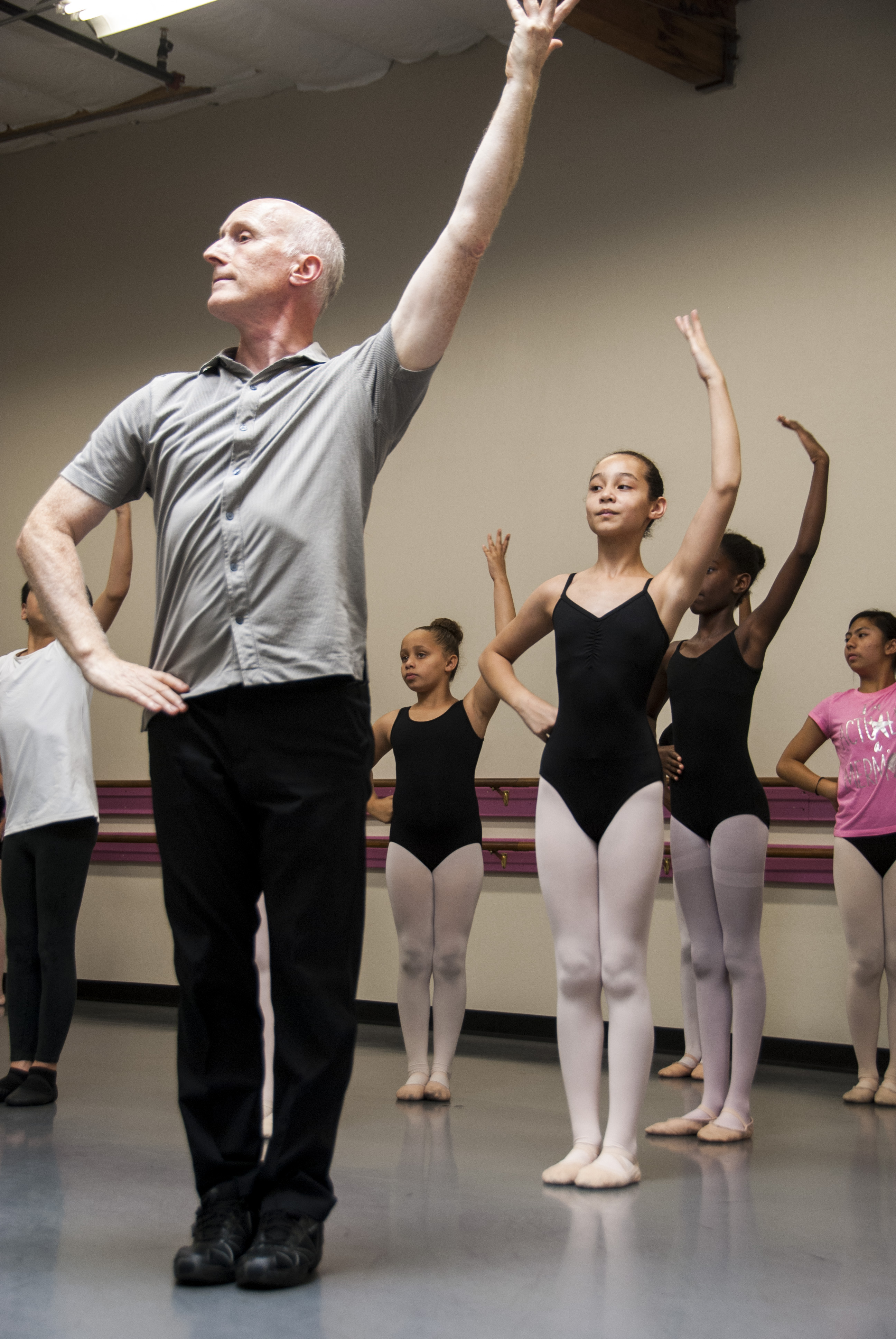
The seniors returned with each dancer performing her own interpretation of a Raymonda solo. Mr. Lustig reminded us that young dancers – particularly women – are primarily taught to copy and replicate. The ability to put their own spin on a classic work represents these young women’s early steps as creative artists. These solos were followed by the showing of a piece choreographed by Oakland Ballet Company dancer, Coral Martin.
The junior group then premiered their funky fusion, which was just what the title implies – a fusion of traditional ballet and modern funk. This was, judging by the giggling that accompanied it, the week’s favorite.

The afternoon ended with a question and answer segment. Q: What was the best part of the week? A: “the whole week!!” “everything!” “technique class”. Q: What was the most difficult? A: “hard on the feet” “lots of bandages”. Q: Why ballet? A: “It’s hard but it’s worth the work and effort it takes because ballet makes you feel so graceful.” “You are expressing yourself”.
By Carolyn Rinetti
Vice President, Oakland Ballet Board of Directors




